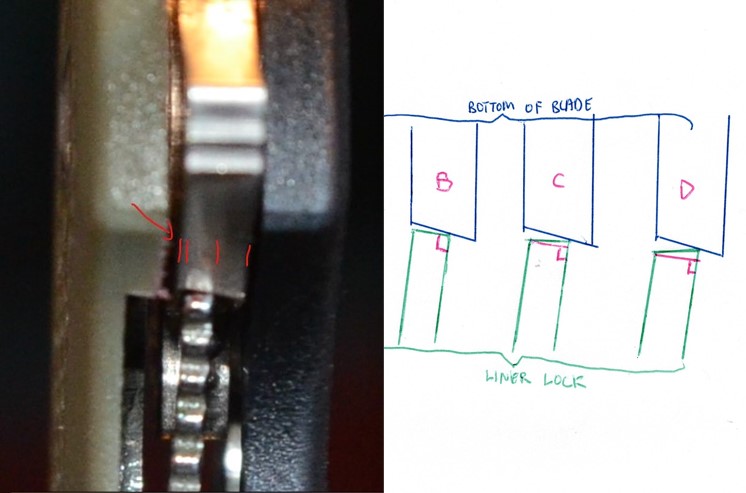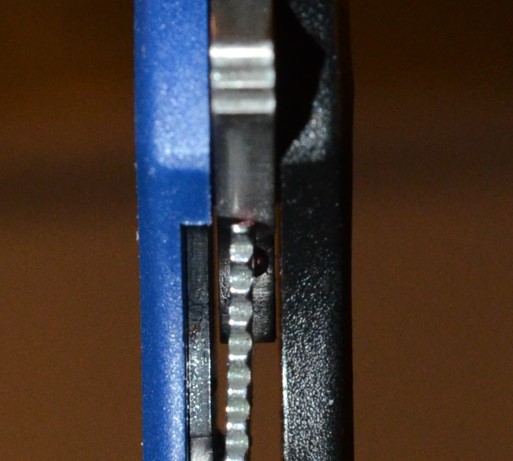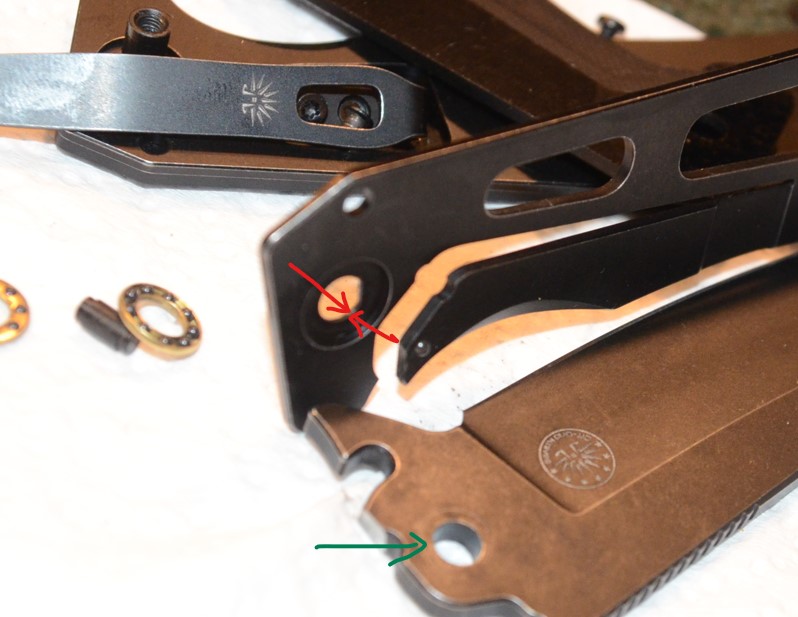Hi, thanks for the suggestion, I checked, it's very expensive and I think this is quite simple to design. I gave it some thought and this is what I come up and I want to get your opinion:Unfortunately not.
I would recommend purchasing R. Terzoula’s book:
The Tactical Folding Knife: A Study of the Anatomy and Construction of the Liner-Locked Folder

To ensure longevity, I decided to only file the liner so it barely goes deeper than the left surface of the bottom of the blade as show in the picture on the left. So it still have a long way to wear to get to the right side.
The most important thing I did is to bend the liner lock out so it put more pressure towards the right side so it make it harder to being push to the left. To me, from talking here, that's the MOST IMPORTANT thing or safety and reliability. Of cause this will make it hard to open.
To solve the problem of hard to open because of the extra pressure towards the right, I use a diamond bit to flare out the Detent hole on the blade where the Detent ball on the liner fit into. That really make it easy to open, NO DIFFERENT from the original knife.
My question is what is your opinion on the angle to grind on the liner lock shown in (B), (C) and (D) in the drawing. I pick (C) so it's not to steep angle like (D) where it wear out faster.
Let me know your opinion and what advice you have.
Thanks
Alan
PS: The knife is Steel Will with bronze washers, no ball bearing. So there is very little gap between the metal liners and the blade. So even if the liner lock wear so it goes all the way to the right, it will be stopped by the metal liner on the right to prevent it from moving pass the bottom of the blade. I actually screwed up one and grind the liner short enough and travel all the way to the right and I actually feel it is quite secure, no free play on the blade, it won't wear out any further as it is rested against the right liner.
I really don't care about the ease of closing the knife, the most important to me is ONE HAND FAST DEPLOY for self defense. I can take my time to close the knife.
to me, the knife is for self defense, it has to have long flipper tap so after it deployed, it will serve as safeguard to prevent the knife from being shoved back to my hand when I thrust and hit hard object. To me that is the UTMOST IMPORTANT FEATURE. There is no other way to protect the hand. A lot of nice looking knives are very stream line and pretty, they don't put the tap and it's useless to me.
Last edited:





